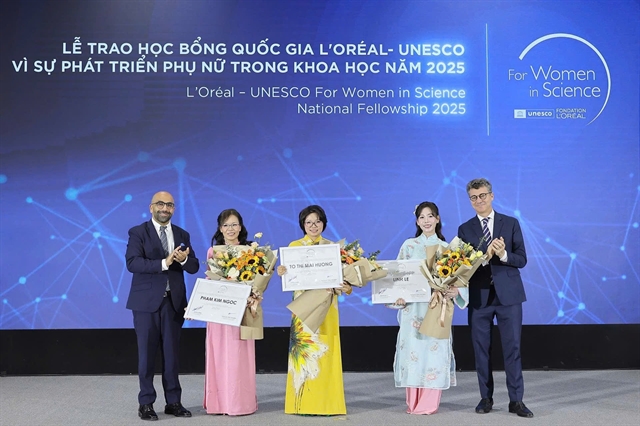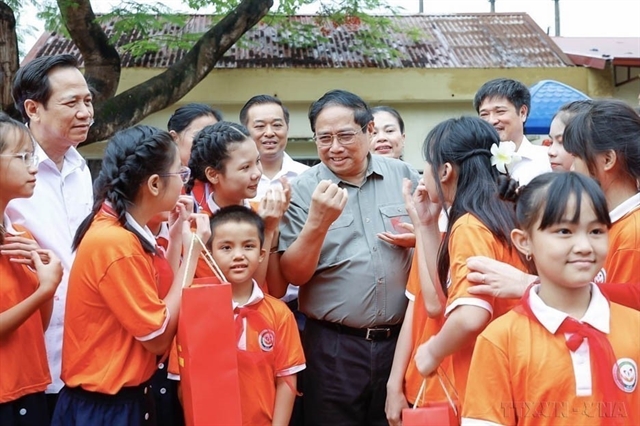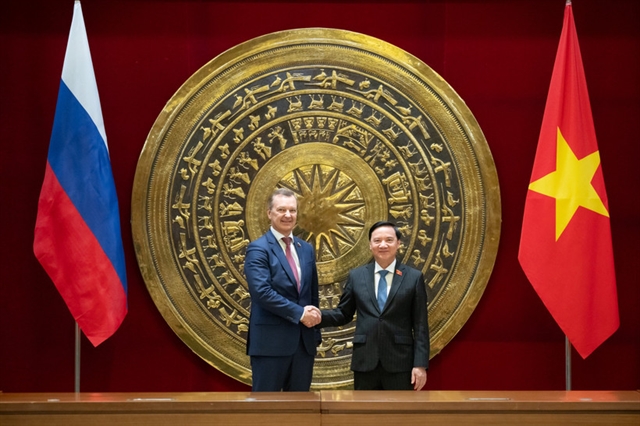 Society
Society


|
| Prime Minister Phạm Minh Chính visits and presents gifts to children with disabilities at the Hà Nội Centre for Disabled Children in Chúc Sơn town, Chương Mỹ district on May 31, 2024. — VNA/VNS Photo |
HÀ NỘI — Việt Nam is one of the countries with a relatively high percentage of persons with disabilities in the Asia-Pacific region and the world.
In addition to the various policies that support the group, enacted by the Party and State to create a legal framework for the care and protection of their rights, society also supports them through education and employment to help them become more self-reliant and improve the quality of life.
Lighting the path to confidence
According to Deputy Minister of Labour, Invalids, and Social Affairs Nguyễn Văn Hồi, Việt Nam currently has over 7 million persons with disabilities, accounting for 7.06 per cent of the population aged 2 and older, with nearly 29 per cent experiencing severe or particularly severe disabilities.
In 2014, the National Assembly ratified the United Nations Convention on the Rights of Persons with Disabilities. In 2019, Việt Nam ratified the International Labour Organisation (ILO)’s Convention 159 on vocational rehabilitation and employment for people with disabilities. In 2022, it joined the World Intellectual Property Organisation’s Marrakesh Treaty to Facilitate Access to Published Works for Persons Who Are Blind, Visually Impaired or Otherwise Print Disabled.
To realise the Constitution and international commitments, the Government submitted the Law on People with Disabilities to the National Assembly in 2010. In addition, the Prime Minister established the National Committee for Vietnamese Persons with Disabilities to assist in addressing relevant issues.
Currently, the social welfare system continues to expand its coverage and improve the quality of policies for the disabled. Over 1.6 million people with severe disabilities in the country receive monthly social allowances, and 96 per cent of the disabled have health insurance cards.
Children with disabilities are assisted to receive inclusive education at educational institutions. For those who cannot participate in inclusive education, they are helped to attend specialised educational institutions.
The entire workforce of people with disabilities (nearly 4 million people) has been supported with vocational training, job creation, livelihoods, or access to loans with preferential interest rates to solve their own employment needs. They have also been given special attention and benefits when using transportation or visiting entertainment areas, cultural sites, and historical monuments, where they receive discounts or free entry.
Đặng Văn Thanh, Permanent Vice President of the Việt Nam Federation on Disability, said the Party and State has provided the best support for them to integrate into life, thus creating equality in society. As a result, the life quality of the disabled has increasingly improved and their rights been ensured.
Rising to master technology
In order to leave no persons with disabilities behind, over the past years, the entire political system has engaged in assisting the group to integrate into the community, especially helping them access and use information technology (IT) so that they can assimilate into life more conveniently and fully.

|
| Vụn Art Cooperative (Hà Đông, Hà Nội) is where people with disabilities turn scraps of silk into unique products such as decorations for shirts, bags, and collage artworks. |
Thanks to such support, IT has become the “hands” of physically disabled persons, the “ears” for the hearing impaired, and the “eyes” for those visually impaired. Digital technology has also helped bridge the gap between people with disabilities and those without.
Thanh said that the development of science and technology has proved greatly useful for supporting people with disabilities, promoting their full integration and equality in society. Technology plays a significant role, helping to eliminate barriers and facilitate communication, information search, and job opportunities.
To support them in accessing and mastering technology, the federation, along with 50 member organisations, has regularly organised IT training classes.
It has also collaborated with the Việt Nam Institute of Software and Digital Content Industry under the Ministry of Information and Communications to develop software that provides statistics on the number of persons with disabilities, the types of disabilities, and their needs in areas like education, health care, and employment. Based on this data, the federation will propose and promote amendments to policies in order to best support vulnerable groups.
According to Thanh, in the digital age, the disabled face many difficulties and challenges such as access and costs. Additionally, there are challenges related to resources and barriers linked with the perception towards them and their families.
In the coming time, the federation and its 50 member organisations will hold various activities to promote IT education and train online sales skills for persons with disabilities. At the same time, attention will be paid to assisting them to access information technology, thus helping improve their lives and reduce their dependency on society.
Over 10 years since the UN Convention on the Rights of Persons with Disabilities was ratified and more than a decade since the Law on Persons with Disabilities came into effect, Việt Nam has worked tirelessly to improve the accessibility for this vulnerable group.
Among these efforts, digital transformation in various fields has made significant progress, contributing to promoting the rights and assimilation of people with disabilities. It is a fact that more mechanisms and policies are still needed to help them to master technology earlier in life, leading to better job opportunities in the future and contributing more to society. — VNS




